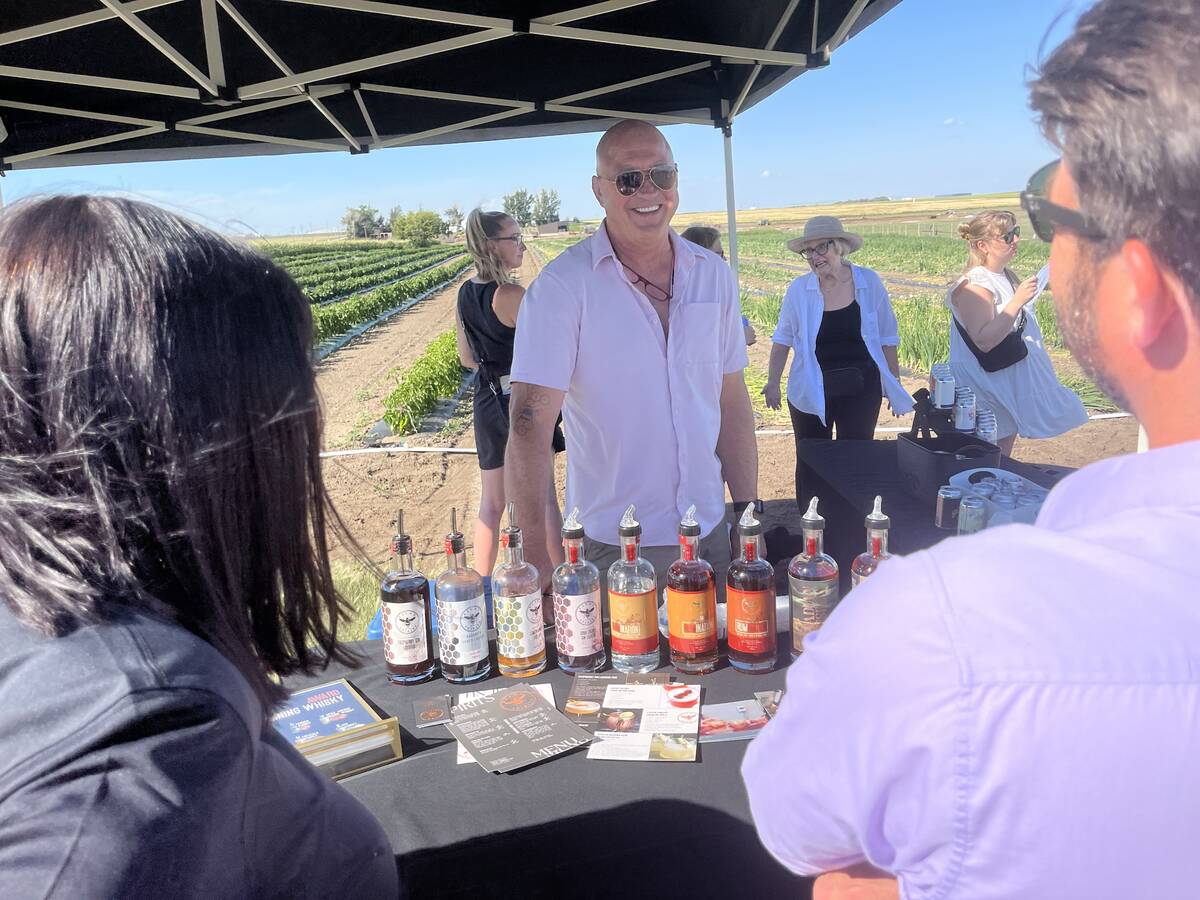British Columbia vineyards have a fascinating history.
We immediately think of the Okanagan Valley, but there are five wine growing regions in the province, including Similkameen, the Gulf Islands, Vancouver Island and the Fraser Valley. Emerging regions are Lillooet, the Kootenays and Thompson-Shuswap.
The location of the province’s first vineyard is unclear. There are stories of vines planted on Salt Spring Island and in Kelowna in the mid-19th century. In 1859, a French Catholic priest, Charles Pandosy, produced wine in Kelowna for celebrations of the Eucharist.
Read Also

From farmer to award-winning distiller
Pivot Spirits showcases transition from farmer to distiller with provincial award-winning results in Alberta for Lars Hirch
Giovanni Casorzo came to Kelowna from Italy and worked as an agriculturalist in the first agricultural community of the B.C. Interior. Giovanni’s wife, Rosa, came to join her husband with their three small children, but arrived in San Francisco and was unable to speak English.
Dock hands advised her to follow the church bell that was being shipped to the Okanagan Mission. She followed the bell and found Casorzo. They later became major shareholders in Calona Wines, and today’s Sperling Vineyards are also a part of this family story.
Terroir means characteristics that are unique because of the geography, geology and climate of the land, including slope aspect and soil texture of a particular location. It is a word also used with food such as cheeses, tomatoes, heritage wheat, coffee, tea and chocolate.
Provenance, on the other hand, relates to origin and history of a vineyard’s owners and vines. Together, they document unique qualities of wines produced in an area.
I first met Virginia Weber of Orofino Wines at the Slow Food Canada conference in Osoyoos, B.C., in June. She was showcasing the winery’s 2011 Riesling. Virginia and John grew up in Swift Current, Sask., and after travelling the world decided to embark on a new adventure. They bought a small vineyard near Cawston, B.C.
“There is a complexity to terroir that goes beyond the obvious,” Weber said.
There are about 130 wineries with 7,000 acres under cultivation to grapes in the Okanagan region alone. It is an agritourism business similar to those in Italy and France. As with so many small scale farms, the profits are not high.
Even winning awards and having high scores do not bring wealth. It is a temperamental business, and financial success might not come until future generations.
And as with farming in general, you can’t predict the weather or the market. In the wine business, they say nothing is sure until the grapes are in the cellar.
Minerality is a relatively new buzzword in wine tasting, but whether people can actually taste or smell wet stones, crushed rocks or earthiness is debatable.
Weber said the Similkameen is different from the Okanagan.
“We have more minerality to our wines with more acidity and less fruitiness.”
The valleys and landscape were formed by the action of glaciers leaving behind sedimentary silt and sandy soil. As they receded 10,000 years ago, the entire area became a lake called Penticton Lake.
Mobile bottling and cooperage are two other businesses in wine country. These are common in Europe and are now available to small wineries here. Weber said Orofino uses Artus Bottling in Naramata, B.C.
“It is far too expensive to have our own bottling equipment. Artus have amazing equipment that carries the wine from the tank or barrel to the bottle, corks or screw caps it and applies each label. Super slick.”
Cooperage is barrel making. Okanagan Barrel Works crafts barrels with woods from all over the world. Its quest to make the best barrels has taken them throughout Europe.
B.C. winemaking has come full circle since the days of Pandosy. It has not only survived but become stronger through the challenges of Prohibition, the North American Free Trade Agreement and the pull-out program that encouraged planting vinifera varietals rather than hybrid grapes
The province has now found its own voice in the wine world. It is no longer known only for expensive ice wines and Baby Duck. Today’s wines are world class, complex and coveted.
The new generation of wineries such as Orofino is off the beaten track and still developing their trademarks in the market.
Orofino’s small vineyard is supplemented by buying grapes so that winemaking can be a viable business.
Orofino has the only straw bale constructed winery in the country. It has nine spare acres but vines as old as 20 years. It is finding that Riesling grapes do well in its location.
“We are so fortunate to have associations with vineyards that take pride in their harvest. We pay for grapes by weight but they prune and give us the best they have,” said Weber.














